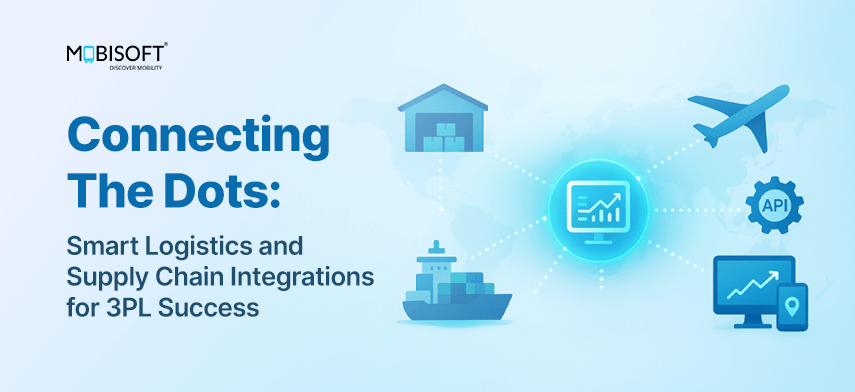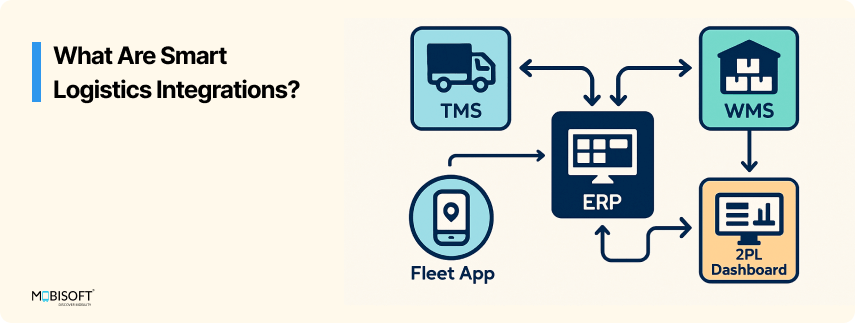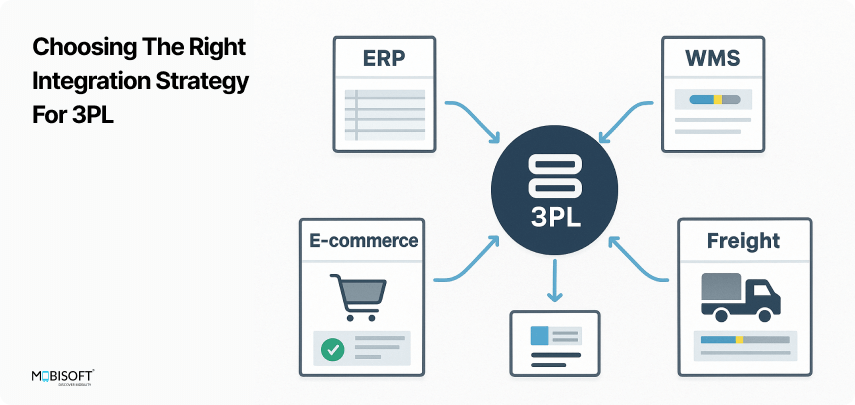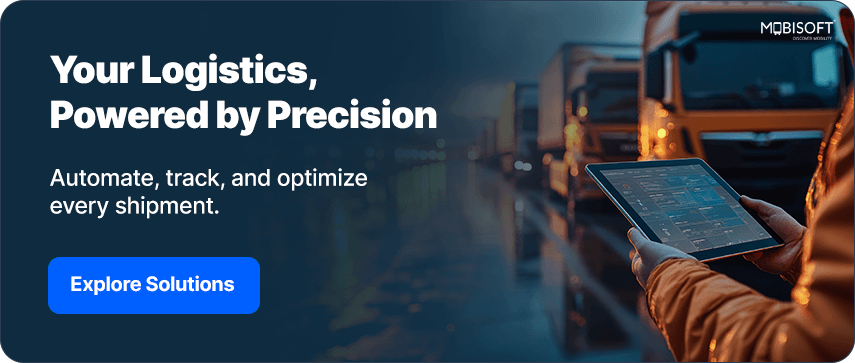-
Новости
- ИССЛЕДОВАТЬ
-
Страницы
-
Группы
-
Мероприятия
-
Reels
-
Статьи пользователей
-
Offers
-
Jobs
-
Форумы
-
Кинозал
Connecting the Dots – Smart Logistics and Supply Chain Integrations for 3PL Success

The U.S. trucking sector transports about 72% of the country’s freight by weight. But here’s the catch: inefficiencies still chew up billions each year. For example, congestion alone costs freight forwarding and shipping companies more than $94 billion in lost productivity in 2023, according to the American Transportation Research Institute.
Many logistics management teams still operate on separate tools, such as ERP for finance, Salesforce or another CRM for customer accounts, WMS for warehousing and logistics, and transportation software for dispatch and drivers. The problem? These systems don’t naturally connect. Shipments get delayed, billing cycles slow down, fleets sit idle, and customers grow frustrated.
That’s where supply chain integration and logistics software come in to make a real difference. When transportation platforms connect with ERP systems, CRMs, supply chain solutions, telematics, and dashboards, leaders get a single, unified digital ecosystem. This means cutting costs, improving service, and scaling operations more efficiently as demand increases.
Discover how a modern transportation management system can simplify your logistics operations.
Why Integrations Are Needed in Logistics and Supply Chain Optimization
A modern global logistics operation relies on multiple systems working in harmony. Without integrations, each system becomes an island. Let’s look at what that means in practice:
- Dispatch doesn’t know when the warehouse is ready – trucks wait idle.
- Finance teams don’t get trip costs in real time – billing delays and revenue leakage.
- Customer service lacks live shipment updates – frustrated clients and poor visibility.
- Drivers or operations staff duplicate entries in different systems – errors multiply.
In short, disconnected systems mean wasted time, higher costs, and missed opportunities for third-party logistics (3PL) providers. Explore our logistics services designed to cut costs and boost efficiency.
What Integrations Solve for Logistics Services

Logistics and transportation technology integrations act as the digital glue that ensures every system shares data automatically:
- ERP Integration in Transportation – Trip costs, invoices, and fuel expenses sync directly with SAP, Oracle, or Dynamics.
- Salesforce Logistics CRM Integration – Customer orders create shipments, and live ETAs appear for service reps.
- WMS and Transportation Software Integration – Align truck schedules with loading windows to reduce waiting and missed slots
- Telematics Integration – Feed real-time vehicle health and driver data into dispatch for safer, smoother operations.
- Transportation Analytics Dashboards – Platforms like Power BI or Tableau pull key indicators together, cost per ton-mile, utilization, and emissions, giving clear insights all on one screen.
The goal is to save time, save money, and improve reliability as the company grows, without chaos. See how real-world supply chain integration delivers measurable business value.
Core Logistics Software Integrations for 3PL Success

ERP Systems (SAP, Oracle NetSuite, Microsoft Dynamics 365, Odoo)
ERPs act as the financial backbone for logistics. Connecting transportation software with ERP systems means that trip invoices, driver allowances, and maintenance costs are captured automatically. This cuts down manual work and speeds billing.
Take a U.S. mining operator, for example. They link SAP with their transport management system, so as soon as the ore ships, trip costs are logged instantly in their ERP. The result: up-to-the-minute financial accuracy.
Supply Chain & Logistics Platforms
Supply chains change constantly. If fleet and warehouse teams are not in step, delays hit hard. Integrating transportation systems with logistics and supply chain optimization tools has a real payoff: no more trucks sitting idle, fewer bottlenecks, and less firefighting on last-mile delivery solutions.
Here’s a practical example. A big online retailer links transportation and warehouse software, using Descartes, to lock delivery windows to pick-pack times. The result? On-time fulfillment jumps.
CRM Systems (Salesforce, HubSpot, Zoho)
Customer trust depends on transparency. Integrating Salesforce with logistics software lets shipments get booked directly from sales opportunities. Service teams get real-time shipment updates, so there’s less chasing and more confident communication.
One U.S. freight forwarder uses this setup when a sales rep wins a deal; shipment booking happens automatically, with the journey tracked inside Salesforce Service Cloud.
Mapping & Routing APIs (Google Maps, HERE, Mapbox, OSM)
Routing defines logistics efficiency. Connecting transportation platforms with mapping APIs ensures accurate ETAs, geofencing, and routes that avoid congestion.
For example, a cross-border logistics provider uses HERE API to optimize routes, factoring in customs checkpoints. The outcome? Fewer delays and more predictable deliveries.
Telematics & IoT (Geotab, Samsara, Trimble, Verizon Connect)
Bringing telematics data into transportation platforms means real-time monitoring of fleet health, driver habits, and compliance. This leads to better safety and cuts down on surprises.
An energy logistics company, for example, integrates Samsara telematics with dispatch. Predictive maintenance alerts stop costly breakdowns during critical cold chain logistics fuel deliveries.
Business Intelligence & Analytics (Power BI, Tableau, Looker)
Data makes or breaks good decisions. Bring those KPI dashboards online. Focus on cost per ton-mile, driver time on the road, and emissions, so the team gets a read on where they are and where changes work best.
A U.S. steel distributor taps Tableau to analyze route efficiency. They manage to cut fuel consumption and trim logistics services costs by over 12% a year.
Payment & Billing Systems (Stripe, PayPal, Razorpay)
Streamlining payments ties up loose ends fast. When the payment platform syncs with logistics tools, billing, driver allowances, and account settlements just roll forward, with fewer errors and delayed checks.
Let’s say a third-party logistics (3PL) firm uses Stripe to send out driver payments right after trips finish. Admin headaches go down, drivers get paid, and nobody’s chasing paperwork later.
Learn how to select the right transportation management system for your growing business.
- AI
- Vitamins
- Health
- Admin/office jobs
- News
- Art
- Causes
- Crafts
- Dance
- Drinks
- Film
- Fitness
- Food
- Игры
- Gardening
- Health
- Главная
- Literature
- Music
- Networking
- Другое
- Party
- Religion
- Shopping
- Sports
- Theater
- Wellness



